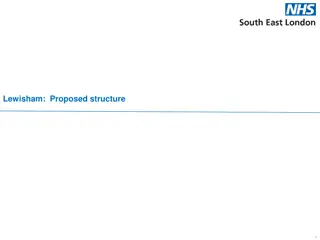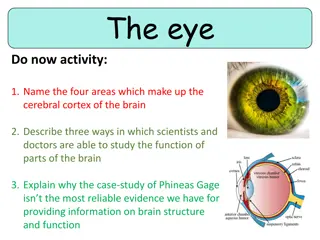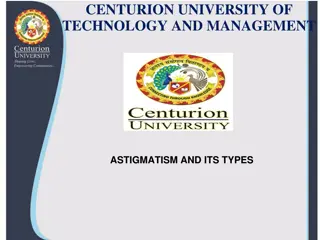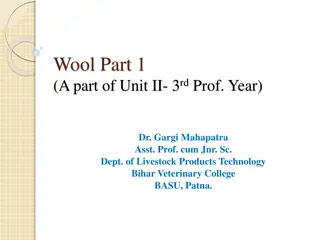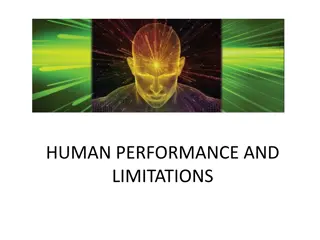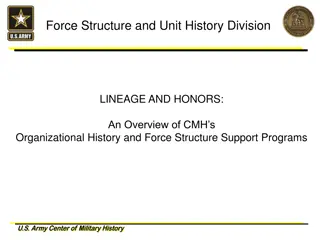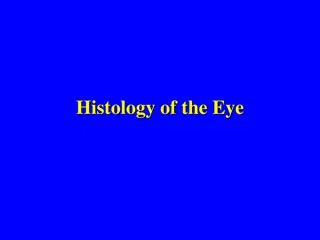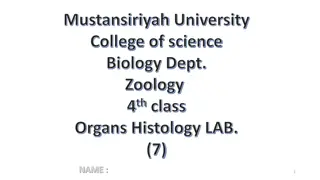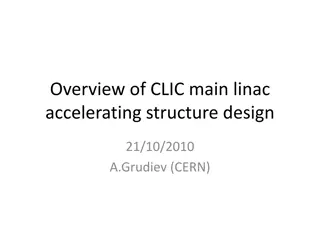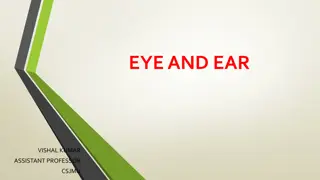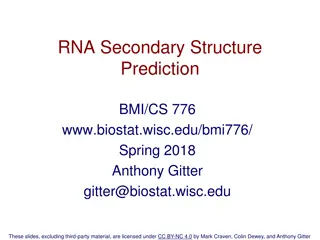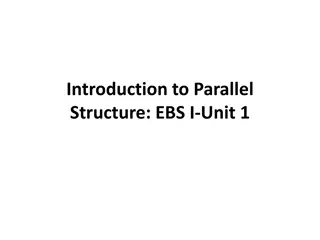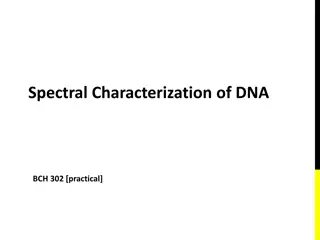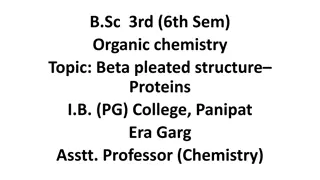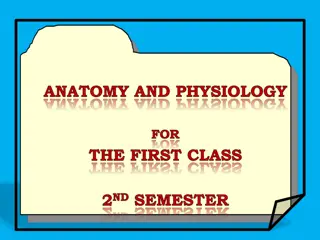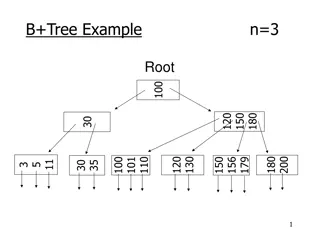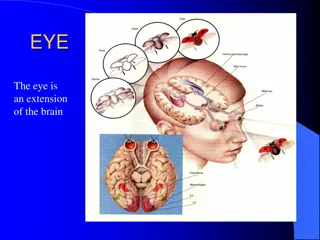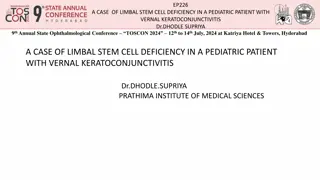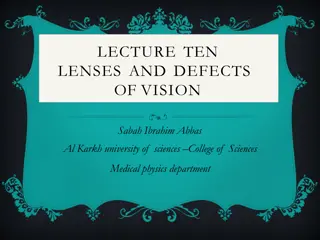Updating ERC Panel Structure for 2024 Calls: Rationale and Main Changes
The European Research Council will revise its panel structure for the 2024 calls to enhance coherence, focus on frontier research, and appreciate interdisciplinarity. The main principles reflect the overarching evaluation policy of the ERC, ensuring a forward-looking approach that evolves with the c
3 views • 12 slides
GCSE Design Technology Knowledge Organiser and Course Structure Overview
In this detailed knowledge organiser, find information about the GCSE Design Technology course structure, learning objectives, mission statement, and core technical principles for KS4 students. The course emphasizes iterative design cycles, creative thinking, problem-solving, and addressing environm
7 views • 53 slides
CAPITAL STRUCTURE
Capital structure refers to the mix of a firm's capitalization, including debt, preference share capital, equity share capital, and retained earnings. Choosing the right components of capital is crucial based on the organization's function and risk level. Different patterns/forms of capital structur
1 views • 6 slides
Capital Structure
An appropriate capital structure aims to maximize shareholder return, minimize financial risk, provide flexibility, ensure debt capacity is not exceeded, and maintain shareholder control. The optimum capital structure achieves a balance of equity and debt to maximize firm value.
1 views • 5 slides
Lewisham:Proposed structure
The organizational structure in Lewisham outlines key positions such as Executive Lead, Director of System Development, and Director of Adult Integrated Commissioning. Various roles within the structure include Adult Safeguarding Designate, System Development Manager, and Mental Health Assistant Dir
0 views • 6 slides
Understanding the Anatomy and Function of the Eye
This comprehensive health assessment explores the intricate structures of the eye including the sclera, cornea, iris, retina, and optic disc. It delves into the visual pathways, accessory structures like eyelids and lacrimal glands, and special considerations like age and ethnicity. The visuals prov
0 views • 39 slides
Understanding the Structures and Functions of the Eye
Explore the main structures of the eye including the iris, lens, cornea, retina, and more. Discover how these components work together to facilitate vision and light focusing. Engage in activities to enhance your knowledge of eye anatomy and function.
0 views • 20 slides
Features of an Appropriate Capital Structure and Optimum Capital Structure
While developing a suitable capital structure, the financial manager aims to maximize the long-term market price of equity shares. An appropriate capital structure should focus on maximizing returns to shareholders, minimizing financial insolvency risk, maintaining flexibility, ensuring the company
3 views • 5 slides
Understanding Astigmatism and Its Types
Astigmatism is a common refractive error where light entering the eye fails to focus on the retina, resulting in blurred vision. This condition is characterized by variations in the shape of the cornea or lens, leading to disturbances in vision. There are two types of astigmatism: regular and irregu
4 views • 33 slides
Understanding the Physical Structure of Wool Fiber
Wool is a natural protein fiber with a unique structure composed of a cortex and cuticle, lacking a medulla. Its physical structure includes the cuticle as the outer protective layer, cortex with corticular cells, cell membrane complex, macro-fibrils, matrix, micro-fibrils, and helical coils. The st
1 views • 17 slides
Thyroid and Parathyroid Glands Histological Structure Overview
This detailed histological study covers the structure and function of the thyroid and parathyroid glands. It includes information on the stroma, parenchyma, follicular cells, parafollicular cells, and the microscopic structure of the parathyroid gland. The article also delves into the functions of v
0 views • 8 slides
Aromatic Hydrocarbons: Structure, Aromaticity, and Nomenclature
Aromatic hydrocarbons, with benzene as a key example, possess unique properties due to their highly unsaturated structures. The molecular formula of benzene is C6H6, and it exhibits resonance through a planar structure with sp2-hybridized carbons. To be classified as aromatic, a compound must have a
0 views • 19 slides
Understanding Protein Tertiary Structure and Motifs
Protein tertiary structure, essential for enzyme function and protein design, refers to the overall three-dimensional arrangement of amino acid side chains in a protein chain. This structure is specific to each protein sequence, with domains and motifs playing key roles in protein architecture. Prot
0 views • 13 slides
Understanding Human Vision and Eye Function
Human vision is essential for many tasks, especially in professions like aviation maintenance technicians. Proper lighting and eye protection are crucial for optimal vision. The eye functions like a camera, with components including the cornea, iris, lens, and retina. Each part plays a vital role in
0 views • 36 slides
Overview of U.S. Army Force Structure and Unit History Division
This content delves into the lineage, honors, and organizational history of the U.S. Army Force Structure and Unit History Division, highlighting its role in maintaining official unit designations, selecting historic units for reactivation, and supporting force structure planning. It outlines the fu
1 views • 11 slides
Introduction to Histology and Microscopy in Anatomy
Histology is the study of tissue structure and function in animals and plants, focusing on the microscopic structure of cells, tissues, and organs. It helps in understanding the relationship between structure and function, intertwining disciplines like cell biology, pathology, physiology, and bioche
0 views • 5 slides
Fascinating Insights into the Functioning of Eyes and Cameras
Explore the intriguing similarities between the working mechanisms of human eyes and cameras. From capturing images to processing them, discover how our eyes serve as the ultimate biological cameras, sending visual information to the brain for interpretation. Delve into the intricate components of t
0 views • 10 slides
Understanding the Science of Color Perception
Objects appear colored due to selective reflection of light wavelengths - some are absorbed, and the rest are reflected. The eye's complex structure, including the cornea, iris, pupil, lens, and retina, plays a crucial role in perceiving color. Color blindness results from missing cone cells in the
0 views • 9 slides
Histology of the Eye: Structure and Function Overview
Explore the histology of the eye, covering the general structure and the microscopic details of the cornea and retina. Learn about the three coats of the eye bulb, including the fibrous, vascular, and neural tunics. Dive into the composition of the cornea, from its transparent and highly innervated
0 views • 24 slides
Anatomy and Histology of the Eye: A Comprehensive Study
An in-depth exploration of the anatomy and histology of the eye, covering structures such as the cornea, sclera, choroid, iris, and more. Detailed descriptions of each component, including layers, composition, and functions, are provided alongside accompanying images for visual reference.
0 views • 11 slides
Overview of CLIC Main Linac Accelerating Structure Design
Detailed discussion on the RF design constraints, beam dynamics, and structure optimization for the CLIC main linac accelerating structure. The analysis covers parameters such as bunch population, wake suppression, RF breakdown, and surface heating constraints. Additionally, the first generation of
1 views • 26 slides
Global Solution BPA Workshops Foundation Proposal Review and Adoption
The proposal review and adoption of the Global Solution BPA Workshops Foundation took place on May 1, 2013. The workshops covered topics such as Global Design/Standardization Modules Overview, Organizational Structure, Academic Structure, Human Capital Management, Campus Solutions, and Finance. The
0 views • 56 slides
Understanding the Human Eye: Structure and Function
The human eye is a remarkable optical system that functions like a camera, with components such as the cornea, lens, and retina working together to form images that are perceived and interpreted by the brain. The structure of the eye, including the cornea, iris, lens, and retina, plays a crucial rol
0 views • 7 slides
Exploring RNA Secondary Structure Prediction in Bioinformatics
RNA secondary structure prediction is a key concept in bioinformatics, encompassing features like stems, loops, and bulges. This presentation delves into the importance of RNA beyond mRNA, highlighting rRNA, tRNA, and regulatory RNA roles. The canonical base pairs A-U and C-G shape the single-strand
0 views • 20 slides
Mastering Parallel Structure in Business Communication
Understanding and implementing parallel structure in business communication is essential for clear, effective, and professional writing. Explore the nuances of parallelism, such as using correlative conjunctions like "not only...but also," to ensure consistency and coherence in your written work. Le
0 views • 21 slides
Understanding DNA Structure and Denaturation Process
DNA is a double helical structure made of 2 antiparallel polynucleotide chains with nucleotide monomers. The structure contains deoxyribose sugar, phosphate groups, and nitrogenous bases (purines and pyrimidines). Hydrogen bonds between base pairs stabilize the structure. Denaturation can occur due
0 views • 16 slides
Understanding Beta Pleated Sheet Structure in Proteins
Beta pleated sheet structure is a secondary structure found in proteins where peptide chains lie side by side to form a flat sheet held together by hydrogen bonds. Proteins like keratin and fibroin exhibit this structure, while denaturation can alter the secondary and tertiary structures of proteins
0 views • 9 slides
Protein Secondary Structure Prediction: Insights and Methods
Accurate prediction of protein secondary structure is crucial for understanding tertiary structure, predicting protein function, and classification. This prediction involves identifying key elements like alpha helices, beta sheets, turns, and loops. Various methods such as manual assignment by cryst
0 views • 30 slides
Understanding the Hierarchy of Protein Structure
To understand proteins' final shape and function, one must grasp the primary, secondary, tertiary, and quaternary structure levels. Proteins, composed of amino acids, fold into various shapes crucial for their roles such as signaling, catalysis, and structure. The primary structure represents the am
0 views • 28 slides
The Importance of Vision and Eye Structures in Human Anatomy
Vision plays a crucial role in human survival, with more than half of the sensory receptors in the body located in the eyes. This article discusses the anatomy of the eye, including the structures involved in vision such as the cornea, pupil, iris, and conjunctiva. It also covers the accessory struc
0 views • 21 slides
Exploring the Importance of Sight and the Anatomy of the Eye
Dive into the significance of the sense of sight, why it is crucial, and how the eye functions to process visual information. Discover the roles of different eye parts, such as the cornea, iris, retina, and optic nerve. Engage in experiments to understand how light affects the eyes and learn about t
0 views • 30 slides
Understanding Acute Visual Loss: Causes and Evaluation
Loss of vision can occur suddenly, affecting one or both eyes and various parts of the visual field. This guide explores the definition, pathophysiology, and evaluation of acute visual loss. Common causes include optic nerve diseases, retinal disorders, and vascular issues. The visual pathway from t
0 views • 37 slides
Understanding B+ Tree Data Structure
Explore the B+ tree data structure, its rules, insertion and deletion operations, node structure, and variations like the B-tree. Learn about maintaining balance, node sizes, and pointers in this efficient data structure designed for disk-based storage systems.
0 views • 15 slides
Ultrastructural Alterations of Renal Tissue in a Male Patient with Fabry's Disease
Fabry's disease is a rare X-linked lipid storage disorder characterized by deficient lysosomal alpha-galactosidase A activity. This condition primarily affects males, leading to chronic kidney disease and progression to end-stage renal disease. Kidney involvement is a critical aspect, and high doses
0 views • 24 slides
Advanced Gaze Estimation Techniques: A Comprehensive Overview
Explore advanced gaze estimation techniques such as Cross-Ratio based trackers, Geometric Models of the Eye, Model-based Gaze Estimation, and more. Learn about their pros and cons, from accurate 3D gaze direction to head pose invariance. Discover the significance of Glint, Pupil, Iris, Sclera, and C
0 views • 40 slides
Exploring the Intricacies of the Human Eye and its Functions
Delve into the fascinating world of the human eye, an extension of the brain, as we explore its proximity to the optic nerve bundle and spinal cord. Understand the crucial role of the retina, lens, cornea, optic nerve, ciliary muscles, and suspensory ligaments in vision. Discover how the retina rece
0 views • 13 slides
Complex Ophthalmic Case Study at TOSCON 2024: Weill-Marchesani Syndrome and Ichthyosis Co-occurrence
A detailed case study presented at the 9th Annual State Ophthalmological Conference (TOSCON) in 2024, featuring a 35-year-old female patient with Weill-Marchesani Syndrome (WMS) and Ichthyosis. The rare combination of these genetic conditions poses unique challenges in ophthalmic management, with ma
0 views • 6 slides
Case Study: Limbal Stem Cell Deficiency in Pediatric Patient with Vernal Keratoconjunctivitis
Limbal stem cell deficiency (LSCD) is a rare condition characterized by inadequate corneal rejuvenation and conjunctivalization of the cornea. In this case study, a 14-year-old male with Vernal Keratoconjunctivitis presented with itching, eye rubbing, and corneal epithelial scarring resembling a who
0 views • 6 slides
Understanding Digital Image Processing Fundamentals
This content provides insights into the essential aspects of digital image processing, focusing on elements of visual perception, the structure of the eye, image formation, brightness adaptation, and discrimination. Explore how the human visual system, akin to a camera, processes visual information
1 views • 8 slides
Understanding Lenses and Vision Defects in Medical Physics
Explore the fascinating world of lenses and vision defects in this detailed lecture from Sabah Ibrahim Abbas at Al Karkh University. Discover the properties of convex and concave lenses, how light refraction forms images, and the workings of the human eye with its cornea, iris, lens, and retina. Gai
2 views • 29 slides




